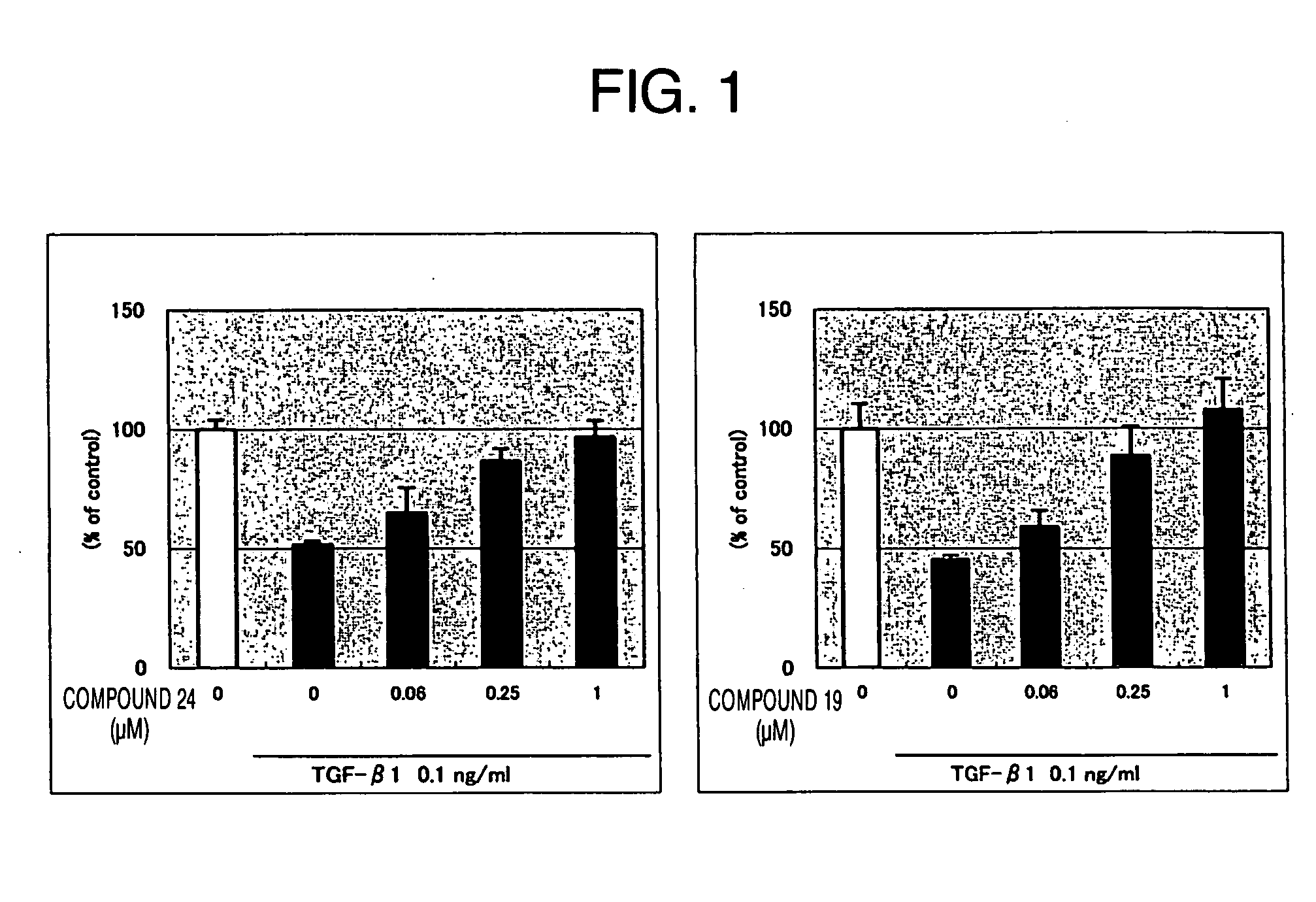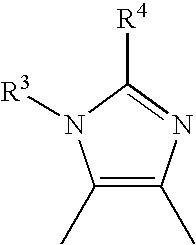Thiazole derivative
a technology of thiazole and derivatives, applied in the field of thiazole derivatives, can solve the problems of unreported and unproven research, and achieve the effect of suppressing the function of alk5 and suppressing phosphorylation
- Summary
- Abstract
- Description
- Claims
- Application Information
AI Technical Summary
Benefits of technology
Problems solved by technology
Method used
Image
Examples
example 1
[0133]
Synthesis of Compound 217
[0134] Triethylamine (25 ml), tetrakis(triphenylphosphine)palladium (642 mg), and 5-ethynyl-benzo(1,3)dioxole (1.79 g) were added to a solution of 2-iodo-4-methylthiazole (2.50 g) in acetonitrile (50 ml), and then the mixture was stirred for 4 hours under reflux condition. After the solvent was evaporated, the resultant residue was purified by silica gel flash column chromatography using a mixed solvent of ethyl acetate and chloroform and hexane to yield the title compound (2.38 g).
[0135]1H-NMR (300 MHz, CDCl3) δ ppm:
[0136] 2.49 (3H, d, J=0.9 Hz), 6.01 (2H, s), 6.81 (1H, d, J=8.1 Hz), 6.91 (1H, d, J=0.9 Hz), 7.01 (1H, d, J=1.6 Hz), 7.13 (1H, dd, J=8.1, 1.6 Hz) mp: 111.5-112.0° C.
example 2
[0137] Synthesis of Compound 203
[0138] Palladium(II) chloride (139 mg) was added to a solution of Compound 217 (1.91 g) in dimethylsulfoxide (13 ml), and then the mixture was stirred for 3 hours at 125° C. This solution was diluted with ethyl acetate and then filtered, the resultant solution was washed with water and a brine successively. An organic layer was dried over anhydrous magnesium sulfate and then the solvent was evaporated. The resultant residue was purified by silica gel flash column chromatography using a mixed solvent of ethyl acetate and hexane to yield the title compound (960 mg).
[0139]1H-NMR (300 MHz, CDCl3) δ ppm
[0140] 2.52 (3H, d, J=0.9 Hz), 6.09 (2H, s), 6.88 (1H, d, J=8.7 Hz), 7.40 (1H, d, J=0.9 Hz), 7.48-7.54 (2H, m) mp: 131.5-132.5° C.
example 3
[0141] Synthesis of Compound 8
[0142] Ammonium acetate (1.50 g) was added to a solution of Compound 203 (893 mg) and 4-cyanobenzaldehyde (510 mg) in acetic acid (40 ml), and then the mixture was stirred for 4 hours under reflux condition. After the solvent was evaporated, the solution was neutralized with aqueous ammonia and extracted twice with chloroform. An organic layer was dried over anhydrous magnesium sulfate and then the solvent was evaporated. The resultant residue was purified by recrystallization from methanol and chloroform to yield the title compound (575 mg).
[0143]1H NMR (300 MHz, DMSO-d6) δ ppm:
[0144] 2.36 (3H, s), 6.10 (2H, s), 7.06 (1H, d, J=7.6 Hz), 7.20 (1H, s), 7.55 (1H, bd, J=7.6 Hz), 7.73 (1H, bs), 7.97 (2H, d, J=8.3 Hz), 8.26 (2H, d, J=8.3 Hz), 13.05 (1H, brs)
PUM
| Property | Measurement | Unit |
|---|---|---|
| temperature | aaaaa | aaaaa |
| temperature | aaaaa | aaaaa |
| temperature | aaaaa | aaaaa |
Abstract
Description
Claims
Application Information
 Login to View More
Login to View More - R&D
- Intellectual Property
- Life Sciences
- Materials
- Tech Scout
- Unparalleled Data Quality
- Higher Quality Content
- 60% Fewer Hallucinations
Browse by: Latest US Patents, China's latest patents, Technical Efficacy Thesaurus, Application Domain, Technology Topic, Popular Technical Reports.
© 2025 PatSnap. All rights reserved.Legal|Privacy policy|Modern Slavery Act Transparency Statement|Sitemap|About US| Contact US: help@patsnap.com



